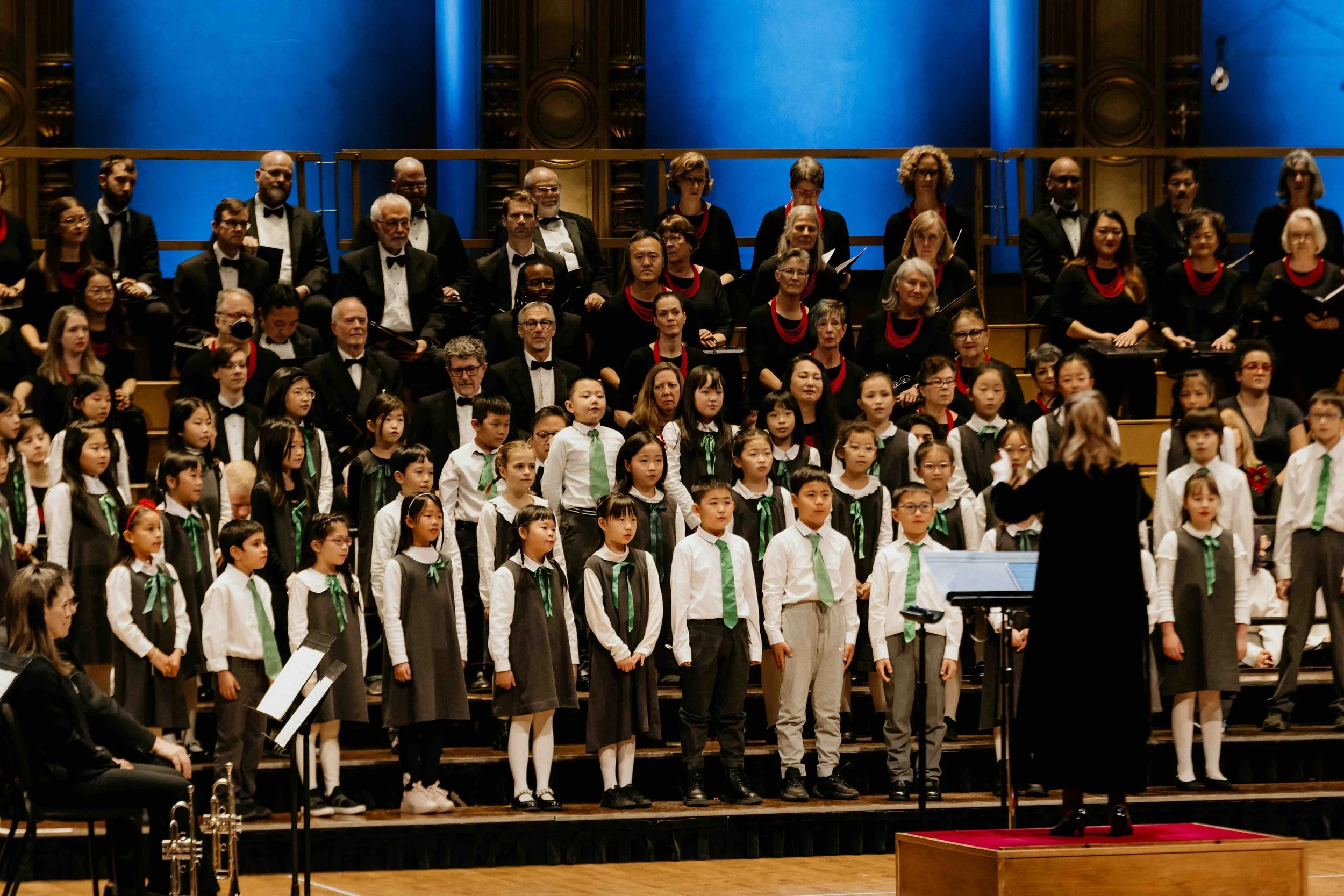UBC Opera's Cendrillon conjures a fairy-tale world with some serious singing
As Cinderella and her Prince Charmant, soprano Alexandra Baird and mezzo Katie Fraser relish the chance to stage Massenet’s magic-dusted masterpiece at the Chan Centre
Alexandra Baird (left) and Katie Fraser star in Cendrillon.
UBC Opera presents Cendrillon at the Chan Shun Concert Hall from February 1 to 3 at 7:30 pm, and February 4 at 2 pm
SOPRANO ALEXANDRA BAIRD’S “eight-year-old princess self” would have been thrilled that she’s starring in the title role of UBC Opera’s production of Jules Massenet’s Cendrillon (that’s “Cinderella” in French).
The show plays out a lot of her childhood fantasies (many of them sealed back then with a trip to Disneyland)—including the fact she’ll be donning a full-blown ballgown.
“Massenet talked about wanting it to be a full fairy-tale vibe,” the fourth-year student in UBC’s music program tells Stir over the phone on a break from rehearsals. “A huge fairy chorus comes in all the time, as well as the fairy godmother. And it reflects in the music as well, with beautiful melodic lines and eight-part harmonies. There’s even a pumpkin coach—this glass, clear, sparkly carriage!”
Baird notes with a laugh that the added bonus, for a soprano, is “playing a female character where I don’t die and I come out alive.”
UBC Opera’s production of the work at the Chan Centre for the Performing Arts promises to please both newcomers to the form—even kids, Baird assures—and fans of Massenet’s lush score, with its glittering textures, Baroque-dance rhythms, and contrasting vocal lines.
Massenet’s magic-dusted Cendrillon, based on Charles Perrault’s 1698 version of the folk tale, was an instant hit when it debuted in Paris in 1899, but it’s rarely performed anymore—adding to the draw of this production, directed by Nancy Hermiston, with Gordon Gerrard conducting members of the UBC Symphony Orchestra.
Much of the plot is similar to Disney’s beloved Cinderella movie, complete with glass slipper, midnight curfew, and the aforementioned pumpkin carriage. But there are also unique moments where Massenet blurs fantasy and reality—literally making the story “a dream come true”. In this production, the Fairy Godmother and her spirits at one point conjure a wall of magic flowers between Cendrillon and her Prince Charmant, then remove it and send the two lovers into a peaceful sleep. When Cendrillon is found by her father in a meadow and awakens, she’s not sure whether she imagined it all or not.
Amid all this, audiences get to listen to a wide range of beautiful singing styles. Baird’s quietly courageous Cendrillon has some big, emotional arias—including Act 3’s “Enfin, je suis ici”, taking her from post-ball panic to hope. Meanwhile the Fairy Godmother sails into some high-flying coloratura, Cendrillon’s put-upon father holds the low, baritone melodic lines, and the evil stepmother and stepsisters navigate some fast and funny runs.
As Prince Charmant, mezzo-soprano Katie Fraser, stepping into the “pants” role, says of her part, “Massenet’s music is so beautiful, and I’m probably biased, but he has probably the most beautiful, romantic music in the show.”
Expect an emotional, and often melancholy, Prince Charmant.
“The prince has been tricky for me in how I want to portray him,” says the grad student in a separate interview. “He’s sad and he has internalized emotions, especially in his opening aria; the first time you see him he’s trying to get everyone out of his way, he wants to be alone, and he’s talking about how he hasn’t found true love yet. At the ball, he’s in a bad mood until he sees Cendrillon—and I feel his mood shifts.”
Expect some dazzling duets as Massenet plays with the mix of soprano and mezzo music—especially in the lovers’ gorgeous piece that happens right before the clock strikes midnight.
“The voice colours of the two are very different,” Fraser observes. “Cendrillon, I feel, has lighter music. The Prince is always smooth, big, slow, romantic… In this opera, it’s so interesting how the music matches the personalities of the characters.” That variety of singing, along with the familiar plot, make it a perfect introduction to opera, she adds.
Baird and Fraser came to opera at similar times in their lives, albeit from different backgrounds. The Saskatchewan-born and -raised Baird grew up as the daughter of two music teachers and dreamed of going directly to UBC for music studies when she was still in high school. She applied in Grade 12 and got in, and her parents soon moved out West behind her. Calgary’s Baird, though she didn’t grow up in a musical family, got the opera bug in her teens, too—first learning about it as a choir singer, then starting to attend summer workshops at UBC from 14 years old. “And the rest is history,” she says with a laugh, referring to the fact that she’s not only earned her Bachelor and Master’s in UBC’s Music in Opera program, but is now finishing her Diploma there, as well.
If these rising stars have learned anything in their years of training, it’s how to ground mythical and fairy-tale characters in real emotion—even in a piece with as many fantastical, ethereal touches as Massenet’s Cendrillon.
“The magic is there, but I think the feelings are really real,” Fraser says of the opera. “It’s this idea of magic without this version, necessarily, of a Fairy Godmother waving her wand, or the Prince running around with a shoe. I feel like the magic is presented in this other way, where you can suspend your belief.”
Still, to hear these two describe it, the design team, including costume designer Parvin Mirhady, have pulled out all the stops to conjure a fairy-tale world that would have pleased Baird’s eight-year-old self. Promises the soprano: “The costumes definitely won’t disappoint.”













